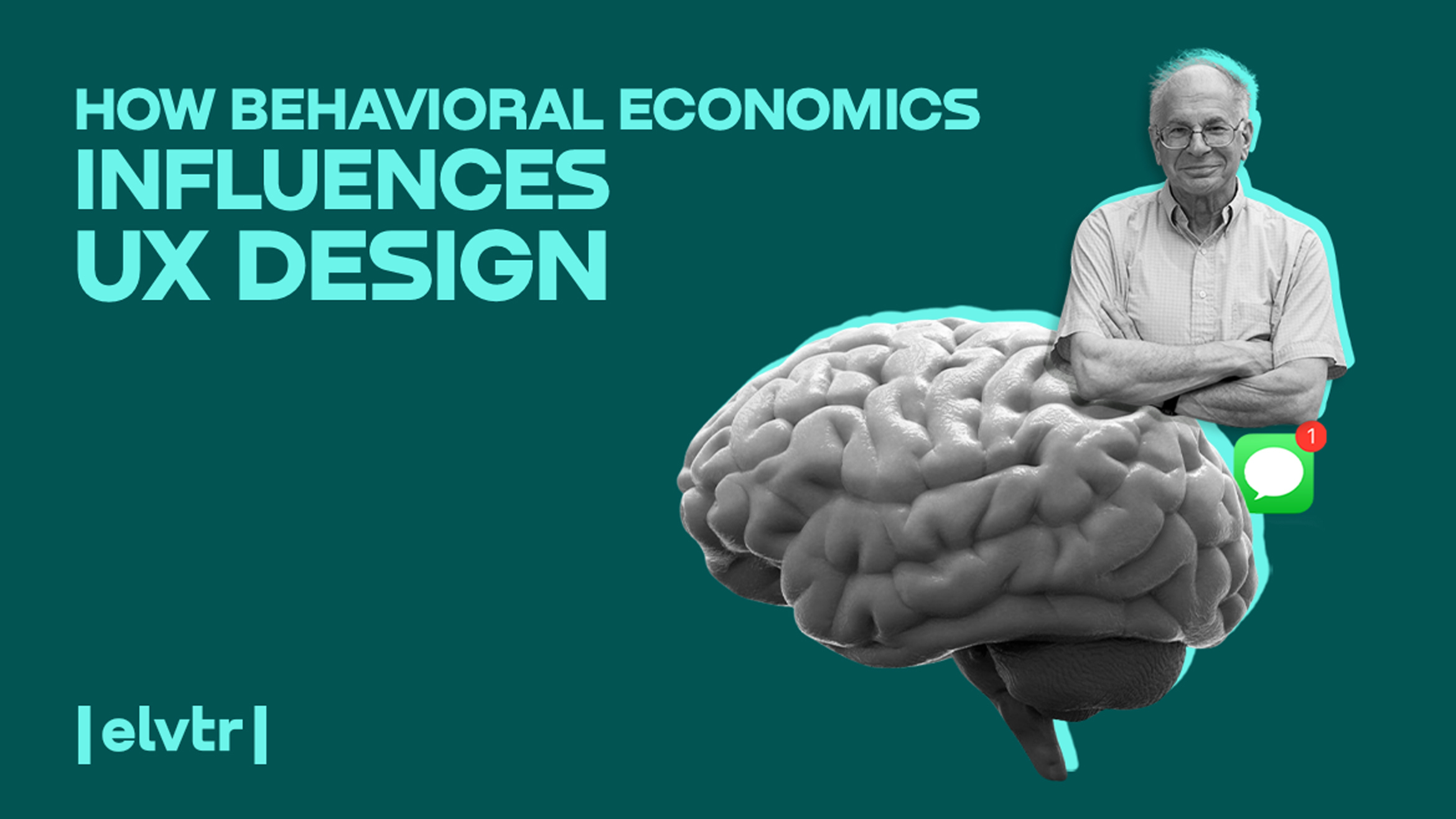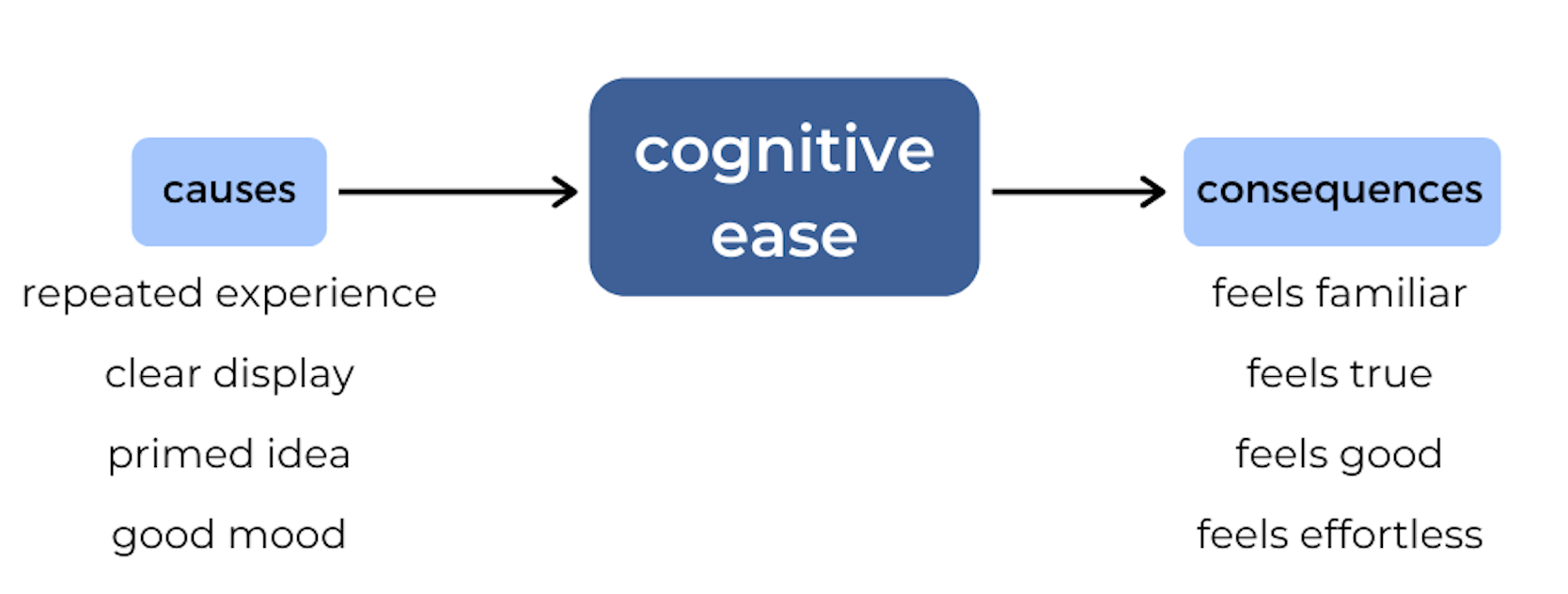- MAIN PAGE
- – elvtr magazine – HOW BEHAVIORAL ECONOMICS INFLUENCES UX DESIGN
HOW BEHAVIORAL ECONOMICS INFLUENCES UX DESIGN

UX VS UI
Overall, UX Designers are user-centric and data-driven masterminds. They analyze usage data and translate this, seemingly at odds bundle of information, into digital products we enjoy.
To do so, these engineers of experience pull concepts from a variety of arts & sciences including Robotics (AI), Data Storage (DSS), Art, and Psychology.
UX Designers utilize the aforementioned brew of art and intellect to foresee how users will interact with elements of the User interface (UI). This is achieved via Human Interaction Models (HCI), the results of which are best seen in products by Adobe.
In a nutshell, User Experience Designers (UX) carve-out the functionality of a site or application and set the flow. Whereas, User Interface Designers (UI) “focus on the brand, the look, the font, the padding and how all of it works together”, according to Liam Harberd, a UX/UI Designer with over a decade’s experience in the digital domain, on the Design Untangled podcast, 2018.
WE'RE BETTER WITH WORDS THAN NUMBERS
Daniel Kahneman is renowned for his work in Behavioral Economics. A field that, according to Ph.D. Colin F. Camerer et al, “increases the explanatory power of behavioral economics by providing it with more realistic psychological foundations”. (Behavioral Economics: Past, Present, Future).
These foundations amplify our predictive capabilities, which are an essential function of any social or hard science.
Kahneman aimed to investigate the very nature of the human mind through something he dubbed Intuitive Statistics.
Intuitive Statistics are quick and biased calculations, or more scientifically, they are a speed/accuracy trade-off that relies on heuristics (less than perfect problem-solving techniques that are infamous for preconceptions) with a wide margin of error, rather than slow calculations from statistical principles.
(Psychological Review “On the Psychology of Predilection" pg237–251).
This is the tool we most often depend on to predict outcomes and foresee events.
“Despite being exceptional Intuitive Grammarians, Humans don’t make for decent Intuitive Statisticians” (Thinking, Fast and Slow pg14).
Whether it’s due to a flaw in the architecture of our mind or something else — we excel at language but fail at intuitively calculating chances of winning, percent of a dollar, number of people in an office with blue eyes... Even if given enough information to make a fairly accurate estimation.
As Noam Chomsky put it: “a child is placed in a linguistic community, presented with a set of sentences that is limited and often imperfect, but in spite of this, the [youngster] achieves in constructing the grammar of their language,” however, as a collective, people bet big on low odds. We possess the capability to generate grammar, but not mathematics.
Indeed, anthropologists suggest that our inherent statistical capabilities are lackluster — evolution preferred accurate assumptions in low integers. Assuming the number of lions in a herd was more vital than complex computations of the jackpot probability on Vegas’s slot machines.
THEORY: THE TWO SELVES
So, can Kahneman’s work in Behavioral Economics affect UX Design in the same way as leads' CTRs or other KPIs a designer may grapple with?
To some degree — it can. And — it has.
The crux of Kahneman’s theory is binary. He believes our mind is a two-speed transmission. And, through limitations in the mechanism of thinking, we make conclusions in one of two gears: high or low. These two speeds of decision-making are referred to as System 1 and System 2, respectively.
“System 1 runs automatically and System 2 is normally in a comfortable low effort mode” (Thinking, Fast and Slow pg62-63).
There’s communication between the two systems, but one drive, and the other — rides.
According to Kahneman, System 1 is automatic and disables voluntary control (Thinking, Fast and Slow pg52). This system is akin to Fight or Flight, but unlike our built-in self-preservation mechanism — the nervous system doesn’t hijack the mind, no adrenaline courses through the blood. During System 1 endeavors — the mind remains at ease.
Yet, System 1 shares modalities with Fight or Flight, a rapid succession of decisions are made while under the influence of this system. Both the boxer and a User reading Reddit are in the grasp of System 1 thinking.
Really, it’s somewhat nebulous, it’s like Fight or Flight was put in a blender with the Id. For example, reading product reviews forces the mind into System 2, but both the Redditor and the boxer are firmly in the realm of System 1.
The art of boxing aside, impulse buys are a System 1 behavior. Placing attracting items near the shopper’s basket might be a nice UX decision. (A ploy to sell more, yes, but a pleasant experience for shoppers who want those items and don’t have to search for them.)
System 2, the mind’s inhibitor, “allocates attention to effortful mental activities like sifting through online reviews to assess the worth of a product and complex computations, whereas, “the [primary] function of System 1 is to maintain and update a model of [our] personal world, which represents what is normal in it” (Thinking, Fast and Slow pg13).
But, System 2 operations “are often associated with subjective experiences of agency, choice, and concentration” (Thinking, Fast and Slow pg52).
Meditation, a state of hyper-concentration, and other seemingly extracurricular aspects of culture, behaviors that don’t contribute to the survival of the fittest. For sure, the "Ah-Ha" Experience is within the realm of System 2.
PRIMING & ANCHORING
Priming, another key element of Kahneman’s window into the Human mind, is a subconscious associative property. For example, if you are primed with the word “eat" — you are more likely to interpret "SO_P" as "soup" rather than "soap" (Thinking, Fast and Slow pg142). (Now, you are primed to think of soapy soup.)
Much like Priming, Anchoring is an associative function of the mind, one of the errors in thinking detected by Kahneman. This property is best explained through a narrative:
Or, as put by Kahneman, “[Anchoring] occurs when people consider a particular value for a quantity before estimating that quantity” (Thinking, Fast and Slow pg. 324).
These are the inner-workings of Intuitive Statistics.
LOSS AVERSION
Also, Kahneman noticed that humans, despite being poor Mathematicians, are averse to lose.
Hence, Americans spend billions of dollars a year on the unlikely event that Godzilla consumes their house or a hurricane finds landfall in Phoenix, Arizona. This peculiar behavior exists because “loses loom longer than gains" (Thinking, Fast and Slow pg775). And, the fear of losing out often trumps logic.
As you know, human logic is a complex computation based on the limitations of our biological functions, past events, and the ability to foresee outcomes, something that’s mostly intuitive or perceived.
For example, a web page’s interface may come across as logical to the user, but they can’t explain why, or, one may say: “I know my wife loves me, it’s just something in her eyes.”
COGNITIVE EASE
In UX Design, attracting our attention is the core KPI. This is most easily achieved by keeping a user in an intuitive state, feeding into their current notions of how a page should function, and creating an illusion of never-ending information.
For example, an easily navigable UI that spits out a seemingly endless stream of discounts would create urgency, although most are aware that resetting cookies will return the same deals on Amazon.
During a state of Cognitive Ease, an attribute of System 1, users are receptive: they “like what [they] see, believe what [they] hear and trust [their] intuition” (Thinking, Fast and Slow pg164).
In this near-trance state, Users are ready to obey a web page’s command. During the Pandemic: doom-scrolling Twitter and impulse buy on Amazon.
Or, as Kahneman puts it, “activities that put a strain on System 2 require self-control and the exertion of self-control is unpleasant” (Thinking, Fast and Slow pg113).
Indeed, it’s desirable for both users and designers to retain System 1 thinking – when a user exerts restraint, they fail KPI’s and recall their experience as disappointing.
And so, if UX Designers create an experience that spits tantalizing deals or interesting feeds at the User, they remain in Cognitive Ease and System 1 thinking.
Cognitive Ease can also be achieved by choosing a clear font, familiar words, or words the reader has been Primed to hear (Thinking, Fast and Slow pg163), but much of this is up to the UI Designer and SEO Writer.
POSSIBLE PRACTICAL APPLICATIONS
Long ago, Belladonna, AKA Deadly Nightshade, was a popular cosmetic in the local bazaar. During the Renaissance, women would drip a drop of the poisonous plant extract into their eyes to enlarge the pupils and attract the opposite sex.
Kahneman, during his investigation into hypnosis, borrowed the notion that the eyes react to internal stimuli from Eckhardt Hess. In fact, the pupils dilate both during the laborious calculations of System 2 thinking and emotional arousal, though quantifiable different (Thinking, Fast and Slow pg82-83).
After all, eyes are the window of the soul and they speak volumes about our mood.
Perhaps, UX Designers could implement pupil dilation recognition via a device’s camera to tell which of the interface’s features are desirable, (ones that cause Cognitive Ease) from those that cast users into System 2 thinking — the kind of rationalism e-commerce apps and social media strive to avoid.
Nowadays, Facial Recognition Technology and retinal scans aren’t merely a Sci-Fi fantasy.
In fact, Facial Recognition technology was invented by Woody Bledsoe et al in 1964 and made accessible via the iPhone X in 2017. As a result of utilizing this technology, undesirable features would be omitted and users would remain in a state of System 1 thinking.
User Experience Designers (UX) may want to take advantage of the nature and errors of System 1 thinking, to achieve a web page’s KPIs and improve user ratings.
Although this is somewhat unscrupulous, aesthetic bias manipulation is consistent with current trends in advertising.
“When the handsome and confident speaker bounds onto the stage, […] the audience will judge his comments more favorably than he deserves” (Thinking, Fast and Slow pg11).
Without a doubt, attractive people, or objects with sex appeal, are deployed to sell everything imaginable.
For mirror design on Mini, the artist learned to draw female breasts.
But, we’re not merely touching on the psychology of aesthetics here.
While crafting an interface, UX designers walk a tough paradox. The paradox is steeped in the space between a developer’s Mental Model and reality.
A web page that hits prescribed KPI’s:
- has proverbial sex appeal;
- delivers modern features while keeping the user in a state of Cognitive Ease;
- implements the laws of Behavioral Economics, and
- mostly aligns with the users' mental model.
In UX and beyond, pain and pleasure are the two masters – mankind's motivating factors. User Interface Designers must keep this in mind.
And according to Kahneman, our retrospective memory (that which causes us to recall an experience with either fondness or bitterness) —tends to focus on two moments: the peak and the end. (Thinking, Fast and Slow pg1044)
If the peak, most intense moments, of a user’s experience were negative and the user simply gave up on attempting — anything inherently good about the design would be forgotten.
All things considered, UX Design should craft features that are located, and perform, in expected ways.
However, this doesn’t mean that UX Designers are at a technical stalemate and that they are prohibited from including new features in a web page’s design. In fact, new features are constantly emerging. It’s just the User Journey, that has to be kept in mind.
Tons of new features are on the horizon. UXPlanet states that 2021 will offer a plethora of techno-goodies:
- Remote and Virtual elements (AR and VR);
- Touchless Interfaces;
- improved Voice User Interface (VUI);
- Air Gestures and Advanced Onbaordings.
— all of this goodness is just around the bend and is soon expected to become new standards. And, as long as these features keep users in System 1 thinking, they will take-off.
CRITIQUE
Despite winning a Nobel Prize, Kahneman’s work was sloppy; his conclusions fail Psychology’s statistical litmus test, the R-index, especially those results related to Priming, a hinging of his work.
It’s mostly Pop Psychology, or in scientific terms, Publication Bias: it was put in print and now it’s true. And, According to Replicationindex.com, studies in Social Priming research, utilizing the R-index, have failed to replicate Kahneman’s work.
In fact, the replicability of his results is estimated to be as low as 25%. This is due to low sample sizes.
As you may know, the R-index is based on Power Theory, an analytical tool that tests the probability of a hypothesis being true on a scale of 0-1 (1 is true and 0 is false). The index “is a quantitative measure of research integrity that can be used to evaluate the statistical replicability of a set of studies.”
In the end, much of Kahneman’s work in Thinking, Fast and Slow can’t be replicated through statistics, or in the all-important peer review.
To put his research in context, it came about in the same year that Psychology found that humans possess psychic capabilities. Imagine UX design influenced by extrasensory perception studies!
And although Kahneman stands by his work, he admits errors in reasoning — the exact thing his studies in Intuitive Statistics set out resolve.
He stated that “studies that are underpowered for the detection of plausible effects must occasionally return non-significant results. […] Absence of [significant] results is evidence that something is amiss in the published record.”
All-in-all Kahneman’s work seems to be a byproduct of his own intuition and desire to be correct, rather than well-conducted research. Irony!
WRAP UP
Certainly, Kahneman’s theories predate the pandemic, an era in which users have the time and do slowly read reviews prior to making a purchase.
In fact, it appears that System 2 garnishes a great deal of the average user’s time in the digital domain these days.
And in general, Mankind has become less gullible and more cognitive. Perhaps, as we become more familiar with System 2 computations, it becomes less painful.
Kahneman’s theories are apt to doom-scrolling, though. Doom-Scrollers are aware, on a subconscious level, that Instagram and Twitter feeds end at some point.
Yet, they are Anchored, keeping the highest possible quantity of fresh information in their mind (which is rapidly moving toward infinity). These poorly executed intuitive statistics indeed trick us into wanting even more information.
This unlimited information instinct, combined with the fear of missing out (Loss Aversion) — keeps us glued to the screens.
It seems like UX Designers may throw anything they want at us and if it’s easy to use, if UI easily incorporates it into the design — we will adopt it.
*ELVTR is disrupting education by putting proven industry leaders in a virtual classroom with eager rising stars. ELVTR courses offer 100% instructor driven content designed to give you practical knowledge within a convenient time frame. Choose the right course for you!

.png)
.png)


